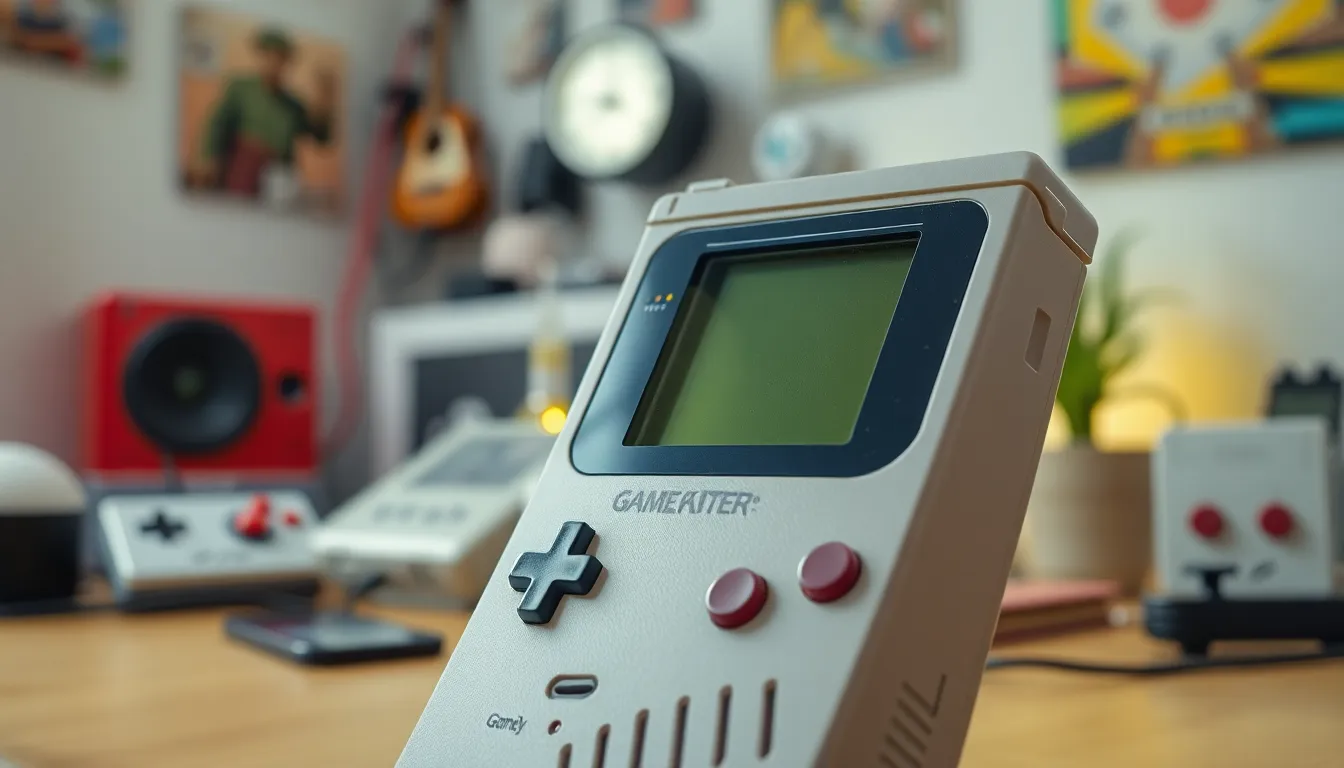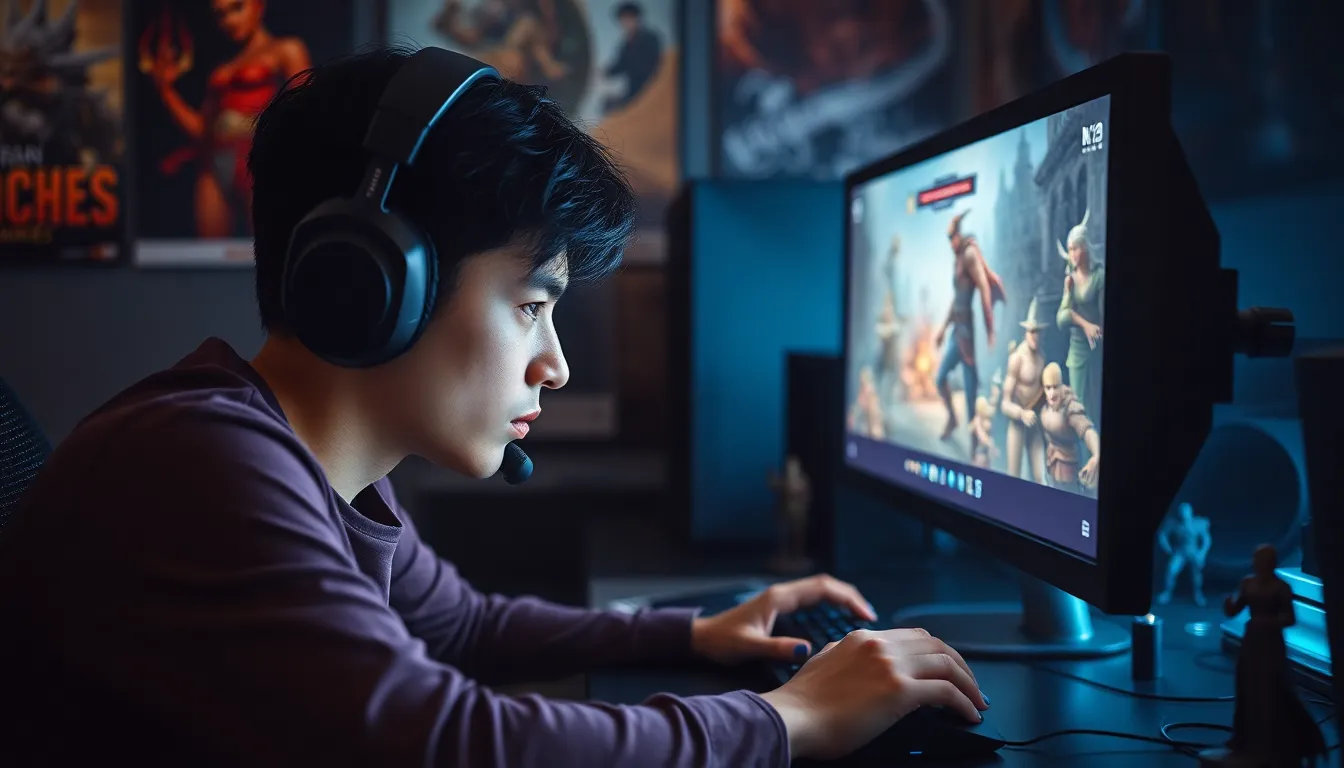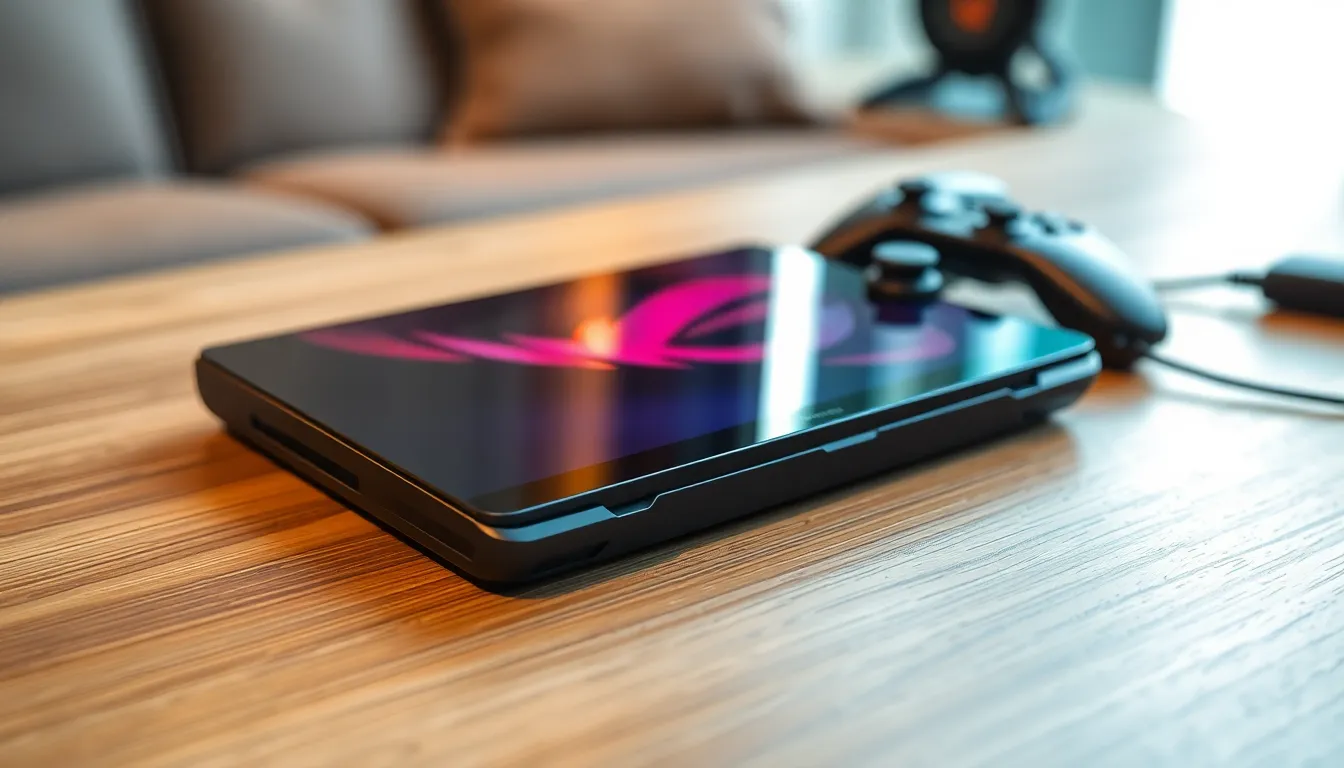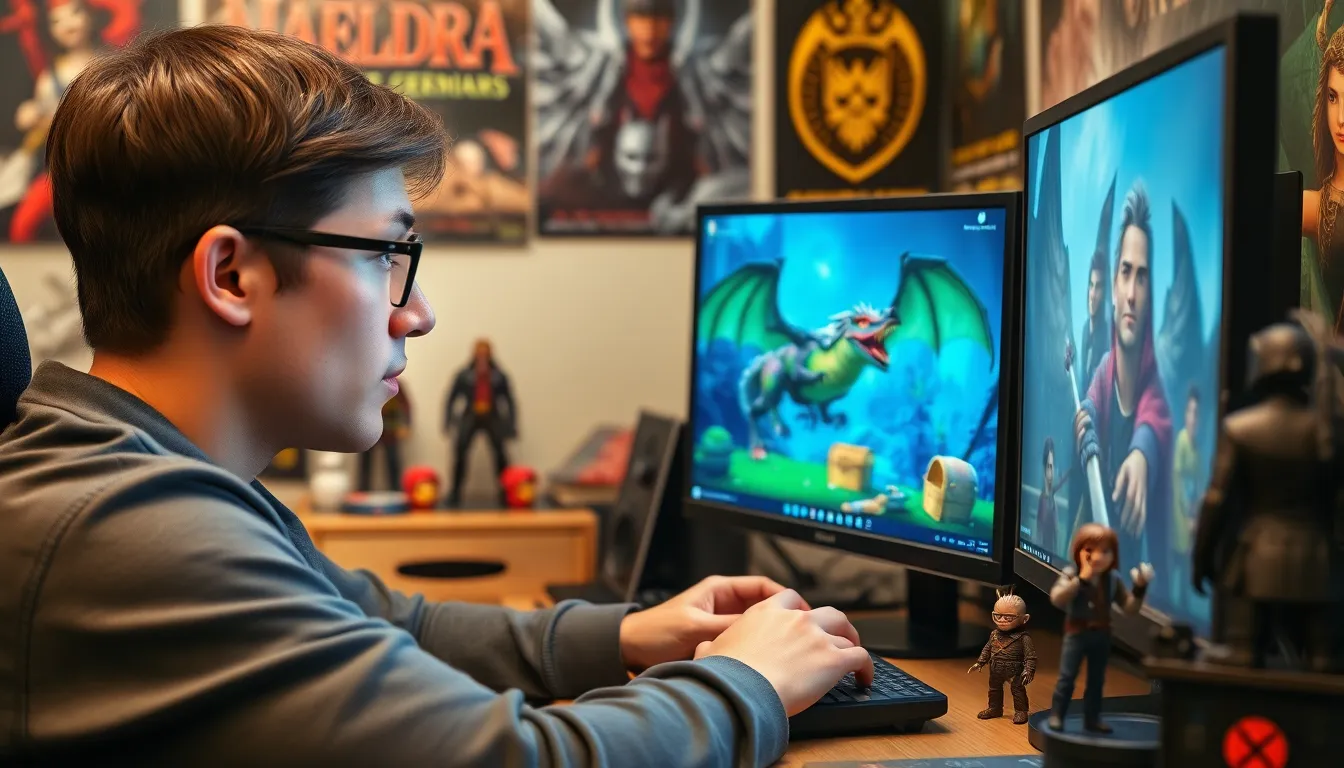Remember those glorious days of gaming on the go with a Game Boy in hand? The excitement of battling foes and solving puzzles was often overshadowed by one nagging concern: battery life. As players ducked into the nearest bushes to avoid enemy fire, they’d also find themselves praying their trusty device wouldn’t die mid-level.
Table of Contents
ToggleOverview Of Game Boy Battery Life
Game Boy devices primarily rely on AA batteries for power. Original Game Boy units typically offer a battery life of approximately 15 to 30 hours, depending on usage. Factors influencing battery longevity include screen brightness, volume settings, and the type of games played.
Subsequent models, like Game Boy Color, provided improved performance with similar battery consumption. Game Boy Advance units saw a slight increase in battery life, offering around 10 to 20 hours of gameplay with two AA batteries.
Lithium-ion rechargeable batteries became more common with later devices, such as the Game Boy Advance SP. This model boasts a battery life of 3 to 10 hours. Users can enjoy extended playtime without the constant need for new batteries.
Game Boy devices often show significant age in original batteries, affecting overall life. Replacement options and rechargeables exist, providing users with alternatives for longer play sessions. Frequent gaming sessions often deplete battery power quicker than casual use.
Maintaining devices in optimal condition through proper storage and battery care can enhance performance. Players should consider investing in battery-saving accessories, such as backlit adapters, to preserve life. Battery life remains a crucial aspect of the Game Boy experience, creating a blend of excitement and concern.
Factors Affecting Battery Life

Battery life on the Game Boy hinges on several key factors. Understanding these can enhance gaming experiences and extend playtime.
Screen Brightness
Screen brightness significantly impacts battery performance. Higher brightness levels drain batteries faster, reducing playtime. Many players opt to lower the brightness during gameplay to conserve energy. Adjusting brightness settings to a medium level often strikes a balance between visibility and battery longevity. The original Game Boy relied on reflective screens, which required less power than the backlit displays of later models like the Game Boy Advance SP. Gamers can maximize their playtime by being mindful of brightness levels.
Game Usage
Game usage patterns also affect battery life considerably. Action-packed games tend to consume more power due to constant processing demands. Conversely, slower-paced titles may use less energy, extending battery duration. Frequent use of sound effects and music further drains the power, especially in games that heavily rely on audio. Saving games regularly can help mitigate damage from unexpected power loss, extending gameplay duration. Adjusting gameplay habits provides players with more control over battery lifespan.
Battery Types Used In Game Boy
Game Boy devices rely on various battery types throughout their generational releases. Understanding these specifications clarifies the device’s energy needs and playtime.
Original Game Boy Battery Specifications
The original Game Boy utilizes six AA batteries for power. This setup provides approximately 15 to 30 hours of gameplay. Factors such as screen brightness and audio settings significantly influence battery consumption. For instance, higher brightness levels result in quicker power depletion. Players often note that gameplay duration varies with different titles, as action-heavy games consume more energy than slower-paced options.
Game Boy Advance Battery Improvements
The Game Boy Advance introduced enhancements in battery technology. This model typically uses a rechargeable lithium-ion battery, offering around 10 to 20 hours of playtime. Such batteries eliminate the need for frequent replacements. Improved battery management allows players to enjoy their favorite games without constant worry about running out of power. Charging becomes straightforward, giving gamers the convenience of plugging in between sessions. Overall, the advancements made in the Game Boy Advance significantly optimize gameplay experience.
Tips To Extend Game Boy Battery Life
Maximizing battery life enhances the gaming experience on the Game Boy. Implementing effective strategies can prolong playtime significantly.
Power-Saving Techniques
Adjusting the screen brightness reduces power consumption. Using the lowest comfortable setting optimizes battery use. Players can also mute the sound when it’s not needed, lessening battery drain. Stopping gameplay during breaks helps conserve power. Avoiding action-heavy games when battery life runs low supports extended play. Cleaning the battery contacts regularly ensures efficient power transfer.
Battery Replacement Options
Using high-quality alkaline batteries improves performance. Players can opt for rechargeable battery packs for convenience and sustainability. Lithium-ion alternatives exist for models like the Game Boy Advance SP, offering longer use without constant replacements. Certain third-party products provide extended playtime through better battery technology. Consulting with experts helps find optimal solutions for individual gaming needs.
Conclusion
The Game Boy’s battery life plays a significant role in shaping the gaming experience. Players often find themselves balancing enjoyment with the need to manage power consumption effectively. By adopting simple strategies like adjusting screen brightness and using quality batteries, gamers can extend their playtime and minimize interruptions.
Advancements in battery technology have also made a noticeable difference in newer models, allowing for more flexible gaming sessions. With mindful adjustments and the right accessories, players can immerse themselves in their favorite titles without the constant worry of battery depletion. Ultimately, the Game Boy remains a beloved console, and understanding its battery life enhances the nostalgia and excitement of gaming on the go.






